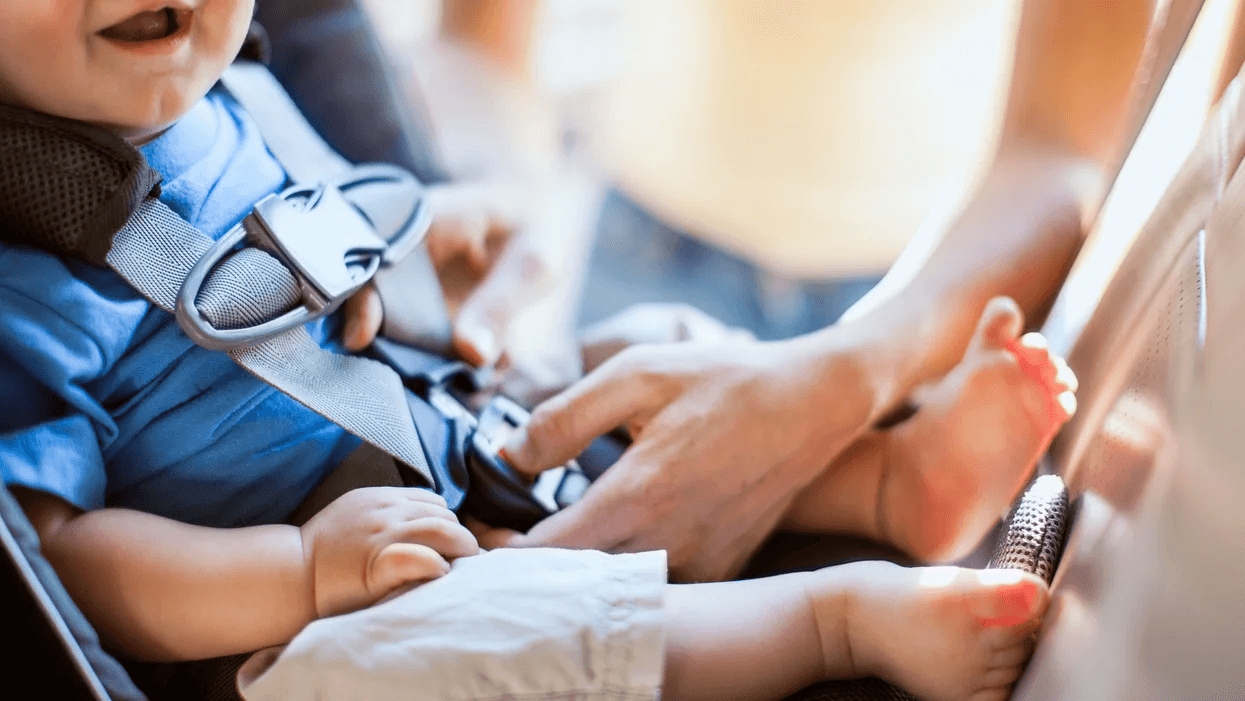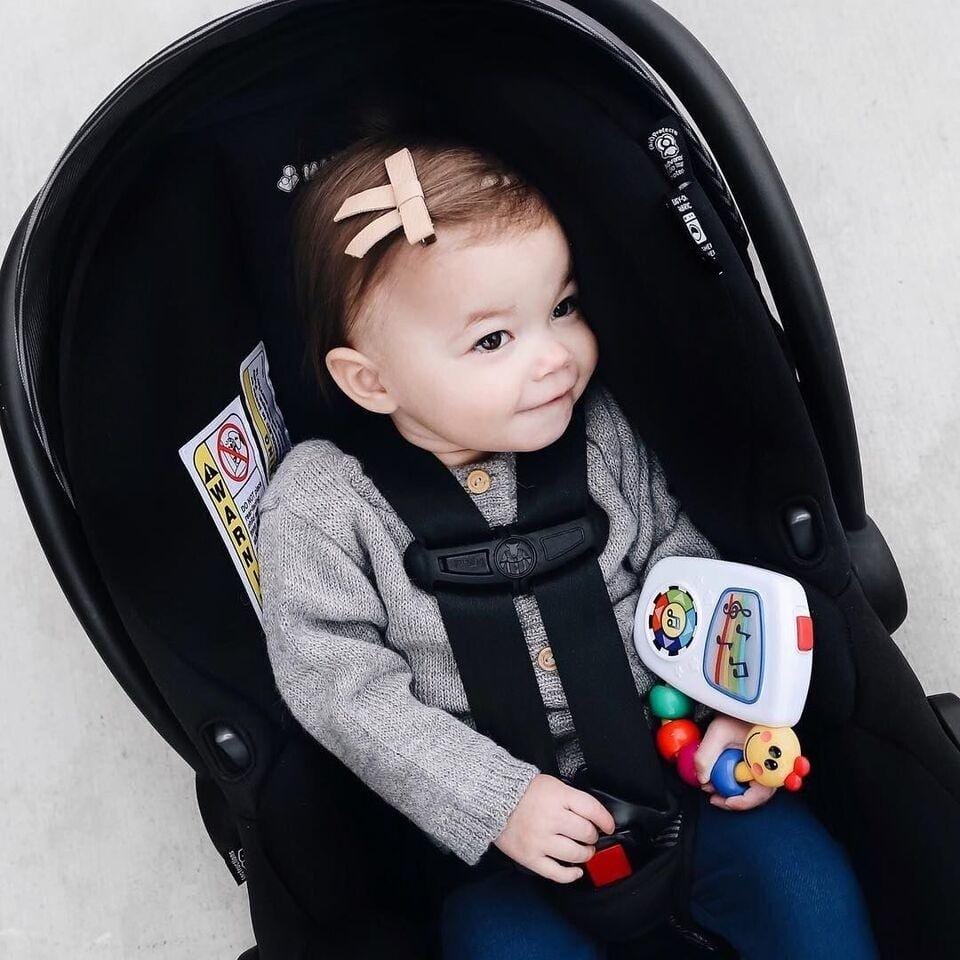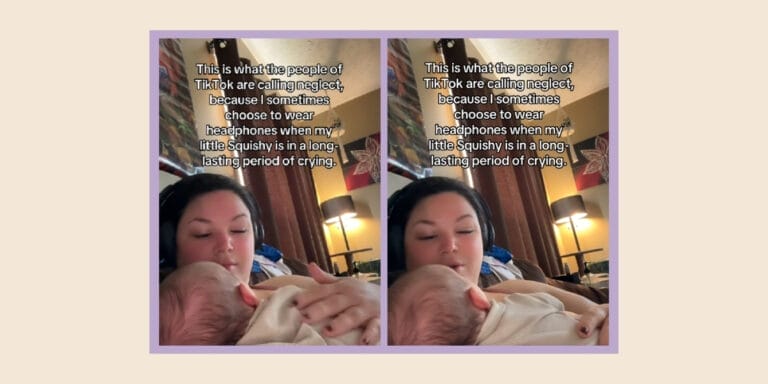The important safety tip parents need to know about sleep & car seats

Why you might want to plan for more pit stops on your next road trip.
Table of Contents
When we become parents we don’t just have to learn how to take care of a baby, we also have to learn how, when and why to use all the different kinds of baby gear.
There is so much to learn and when it comes to car seats there is one rule many parents haven’t heard of: infants shouldn’t be left in car seats for more than an hour at a time, and they should never nap in a car seat outside the vehicle.
According to multiple studies, babies are at risk for decreased oxygen levels while in car seats, especially when the car is not in motion or the trip lasts for an extended period of time. Although preterm babies or infants with respiratory conditions are most at-risk, there is good reason for all families to take proper precautions.
As Scottish mother-of-two Kirsti Clark recently told STV, she had no idea that infants shouldn’t be left in car seats for more than an hour at a time until her 3-week-old daughter, Harper, had a seizure following a car trip that went longer than expected. It was a situation not unfamiliar to many other families: The Clarks simply got stuck in traffic and then left Harper in the seat while they put their older daughter to bed.
Related: A parent’s guide to car seat safety: Tips, rules & product picks
When Harper’s father then took her out of her car seat she seemed like she could not get comfortable on his lap, Metro reports. Her father tried to settle her on a play mat and that’s when the baby suffered a seizure. The Clarks rushed to the hospital where she was treated and thankfully recovered. But, Clark says one of the biggest shocks to her was that these car seat guidelines even exist.
“I’ve never once been told a child should not be in a car seat for any length of time,” she told STV. “Nowhere in the instruction booklets or any guidance that we’ve seen online has there been anything mentioned about breathing difficulties.”
This is why some hospitals do what’s known as a “car seat challenge” with preterm babies before discharge, which allows professionals to monitor the baby’s cardiorespiratory stability when they’re in their car seat.
Make sure all care providers know to never use a car seat for naps
Sharon Evans, a trauma injury prevention coordinator at Cook Children’s Hospital, told WFAA News the idea that car seats can be used for naps outside the car is a pretty common misconception that needs to be cleared up.
“There’s nothing about the car seat that’s designed to sleep,” she told WFAA News. “Of course, if the straps aren’t tight, the child can kind of slump down.”
Safety experts say parents should make sure everyone who looks after the baby, including daycare providers and babysitters, understands that they should not be placed in the car seat outside of the vehicle.
Related: AAP releases new 2022 safe sleep guidelines: Here’s what parents and caregivers need to know
Lisa Smith tells WFAA News she did understand the risks associated with car seat naps and didn’t let her baby daughter, Mia, nap in the car seat. Tragically, at nearly 18 months old Mia was left to nap in a car seat at her licensed home daycare, and lost her life to positional asphyxia, or restricted breathing. Now Smith, like Clark, is on a mission to educate other parents to make sure this doesn’t happen to another child.
“I walk around town and see people using a car seat on the seats at restaurants or putting them on the floor at tables,” Smith says, adding that she will tell Mia’s story to parents when she sees a baby napping in a car seat, letting them know kindly, “‘I just want you to be really careful.'”
What parents should do
Researchers with the American Academy of Pediatrics and the Canadian Paediatric Society agree with Smith: The most dangerous time for a baby to be in a car seat is when they’re not actually in a car. So while it may seem convenient to leave a sleeping babe in their car seat after a long trip or while you’re at a restaurant, it’s best to take them out right away.
The AAP recommends that when you are using the car seat as intended in the car, plan”to stop driving and give yourself and your child a break about every two hours.” In the case of babies younger than one month, some car seat researchers recommend avoiding unnecessarily long road trips.
“Restrict it to say, no more than half an hour or so,” Professor Peter Fleming, a noted car seat researcher, told the BBC. (If you’ve got to go farther than that, just plan for rest stops to get baby out of the car seat.)
All this comes with one significant note: While baby is in a moving car, safely buckled into a car seat is always the safest place to be. As noted in a study The Journal of Pediatrics, babies riding in a car seat as per the manufacturer’s guidelines have a very low risk of suffocation or strangulation from the harness straps.
If we’re aware of the risks and make sure to take breaks and take the baby out of the seat when the car stops, everyone can ride safely. Car seats, when used properly, are a literal lifesaver we should all be thankful for.
[Update, September 13, 2018: Added information regarding Lisa Smith’s case.]
A version of this story was published in 2018. It has been updated.


































